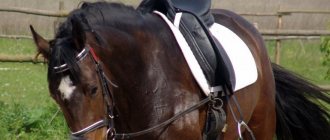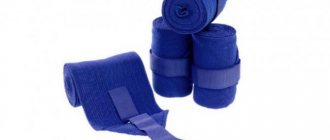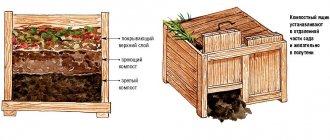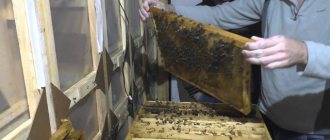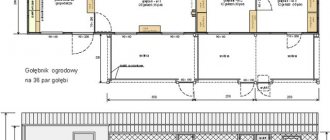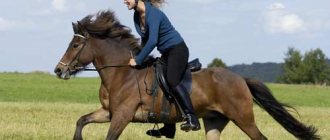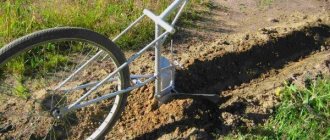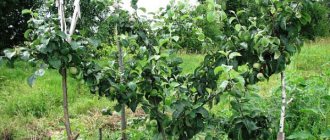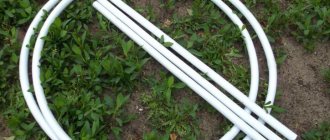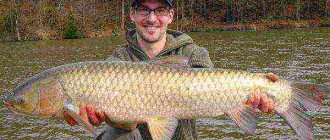One of the most important types of riding equipment is the saddle. It is, first of all, intended to protect the backs of horses and then the comfort of riders.
Jumping saddle Wintec 500 with Cair system
In the process of fitting a saddle, the height of the horse's withers, the length of the tree, its purpose, etc. are taken into account. It is because of this, as a rule, that most saddles are made to order.
There are several types of saddles:
- English type;
- Western saddle;
- Asian type;
- Spanish type.
A lady's saddle for a horse deserves special attention, which these days can be found during historical restorations or horse shows.
Purpose
A saddle is an equestrian equipment intended for riding a horse or transporting goods. In ancient times, such devices were an ordinary blanket held in place by belts. Modern saddles have a complex design and are often very expensive.
The main purpose of the bridle is to control the horse. Its main parts are holding belts for various purposes and a bit (most often metal). This type of equipment is placed on the horse's head.
There are several varieties of both saddles and bridles, each of which is intended for use in special cases. The design of both of these horse accessories, as already mentioned, is quite complex.
How to wear a halter correctly
How to put on a halter correctly? In order for the product to fit correctly, it is important to follow all recommendations. Let's describe the whole scheme step by step:
- The first thing you need to do is to carefully inspect the halter to see if it has cracks or other damage, or if it has changed in size. Leather halters last longer than those made from rope.
- Stand on the left side of the animal and show a friendly attitude.
- With a sharp movement of your hand, throw a chombur around the horse’s neck, and then unfasten the top strap at the back of the head.
- Start straightening the lead ropes after the chumbur, if you are using a rope halter, then place the bridle itself directly on the horse’s head, then close the carabiner.
When working with an animal for the first time, you should not make sudden movements while throwing the chumbur. Also, you should never show your fear: horses feel it. It is better to wait for the time when the horse is more inclined.
Now you know how to choose the right bridle, how to make a bridle for a horse with your own hands. In conclusion, we will say that all the devices described above are designed to simplify the care of horses, as well as control over them. It is important to choose the right model of bridle or halter, use it only strictly for its intended purpose and according to the instructions for as long as it remains in good condition, that is, without cracks and holes.
Basic elements of a saddle
A saddle and bridle for horses consist of quite a large number of elements for different purposes. The first attribute, for example, has in its design:
- tree;
- bows and seat;
- stirrups;
- pillows;
- tangles;
- fender;
- trims;
- girths;
- martingales;
- underarms;
- saddle pad.
The shape and size of some of these elements may vary depending on the purpose of the saddle. The structure of this type of equipment must be such that when using it while riding, neither the rider nor the horse itself experiences any discomfort.
The structure of a saddle for a horse
The saddle is a complex device, with a large number of components. What does it consist of? Main parts:
- tree;
- seat (frame);
- front and rear pommel;
- stirrups;
- Schneller;
- fender or fender (at a western saddle);
- saddle cushions.
This is the general composition of different types of saddles.
Before using each type, you must familiarize yourself with the individual diagram. Did you know? The heaviest stallion in the world is Sampson, who weighed as much as 1520 kg
.
Essential elements
In our time, saddles for horses are made on a solid frame called a tree. The shape and dimensions depend on the parameters and configuration of this particular element. Different materials can be used to make tree trees in modern workshops. But most often saddle frames are made of wood or durable flexible plastic.
In the upper part, a saddle for any purpose has a concave shape. This is necessary so that the rider can sit comfortably on the horse. The upward curved edges of the saddle are called bows. The height of different types of similar equipment may not be the same. The place where the rider sits while riding, that is, the lowest plane of the concave part of the saddle, is called the seat.
Stirrups are special metal brackets on which the rider rests his feet while riding. This element also has another purpose. The rider rests his foot on the stirrup when mounting the horse.
The saddle is secured to the animal's back using straps. The tree, bows and seat can be called the main elements in the structure of a horse saddle. But such ammunition also has one more very important part of the design - fenders. When riding a horse for a long time, riders, unfortunately, very often strongly rub the inner surface of their legs. In order to prevent such trouble, fenders are used. In another way, these elements are called wings. They are located on the sides of the saddle below the seat and bow. Their thickened arched edge forms a pillow.
Properly selected equipment, among other things, should under no circumstances touch the horse’s spine. To eliminate this possibility, a cushion is provided in the structure of the saddle. Such rollers on the edges of the wings are stuffed with wool or synthetic materials.
Types of saddles
To say that the types of horse saddles are equal to the number of types of horses would be incorrect. There are many more of them. Horseback riding requires a lot of effort from horse and rider. Sometimes, in order for the animal to gain more speed, the seat must be uncomfortable for the rider.
In order to figure out what each of them is called, how much it weighs, what they are like, you need to spend a lot of time. Below are the main characteristics and differences, weight in kg and purpose for each type. Let's look at the walking one first.
Universal walking
This equipment is intended for all those who value comfort and also want to enjoy measured riding. It is used to cover medium distances at a leisurely pace and for horseback riding. The universal saddle combines the features of the other two:
- for dressage;
- for jumping.
Weight varies depending on model, but is approximately 5 kg.
English
It doesn't have a cone or pillows. Depending on the height of the front and rear canopies, the length, location or shape of the wings, and the depth of the seat, the English is divided into subtypes according to purpose:
- tourist;
- for equestrian polo;
- racing;
- hunting;
- competitive;
- ladies', etc.
Weight varies from 4 to 7 kg.
Pack
Designed for transporting packs. Its design allows the load to be evenly distributed and securely secured on the horse’s back. Protects the back from damage and reduces the pressure of the load on the horse's chest. Weight is small, about 2-3 kg.
Shelf
The name comes from the structural features of the saddle. It has two curved shelf boards. The design was also used in ancient times, when the horse was used mainly as a means of transport. Weight can reach up to 15 kg. In turn, it is divided into several types.
Shepherd's
Designed for herding livestock while riding a horse. Provides convenience and comfort for both rider and horse. Weight is about 7 kg.
Ladies'
Only suitable for horses with a long back. Intended for women only. It is not advisable to stay in this saddle for a long time, since long journeys cause discomfort for the rider due to the position of the body. Features long shelves. The weight of a women's saddle is up to 8 kg.
Cavalery
The combat saddle is used in military cavalry. The structure allows for optimal distribution of the rider's weight. Cavalry ammunition weighs about 7–11 kg.
Running
It has plastic shelves, which significantly lightens the weight of the device. Designed specifically for mileage. Weight - up to 6 kg.
Cossack
The shelves of the Cossack saddle are much shorter than those of the cavalry. The main purpose of the design is to provide comfort to the rider, but not the horse. A special feature is the absence of a leather cover (it is replaced by a soft pillow). Weighs approximately 5–9 kg.
Hunting
Allows the rider to feel the horse and maintain an even posture. Does not touch the withers. Weight is about 10 kg.
Officer's
It was created for police officers and army personnel, for use in parades. Nowadays it is used mainly for long trips and driving in the field. Weight - up to 7 kg.
Types of belts
There are several such elements in the saddle design. Belts can be intended both for fastening equipment of this type on the horse itself, and for fixing its individual parts. A harness, for example, is a belt located under the wings of the saddle. The girth, in turn, is designed to prevent the harness from slipping.
Another type of belts included in the saddle design are harnesses. These elements are threaded through special rings called snellers. The straps are located on both sides of the saddle and are intended for attaching stirrups to it.
Additional items
The design of a modern saddle was developed in such a way that the horse experiences a minimum of discomfort when riding. However, even the most expensive and high-quality accessories of this variety can, unfortunately, rub the animal’s back. To prevent this from happening, the saddles are supplemented, among other things, with a saddle pad. In another way, this element is called a sweat cloth. Whatever the structure of the saddle - Turkish, Russian Cossack, universal, etc., a saddle pad in most cases is necessarily included in its design.
A saddle cloth is a small blanket or rug, a kind of padding for the back of a horse. The saddle on the horse is put on top of the saddle pad. Modern sweat pads can be made, among other things, from special synthetic gel materials.
Also, quite often, a special type of belt called a martingale is included in the design of a horse saddle. The character of some horses can be quite obstinate. While riding, such horses often raise their heads strongly. This, in turn, makes it much more difficult to control the horse.
If a horse throws its head too far back, it can even injure the rider and throw him to the ground. To prevent this from happening, a martingale is used. A belt of this variety is passed between the animal's front legs and attached to the girths and bridle of the horse.
How to put a saddle on a horse
A horse will allow you to put on the equipment if it completely trusts its owner. First, the animal must undergo initial training and learn the basic commands of the rider.
Equipment is worn according to the following rules:
- The animal is examined for injuries. There should be no debris on the back in the form of thorns and hay. Otherwise, contaminants will rub the skin of your back, which will lead to wounds and abrasions. All debris is carefully brushed off with a brush or hand.
- To prevent chafing your back, place a pillow on top.
- The seat is placed on the saddle pad, then the girths are lowered.
- The position of the saddle is fixed using a belt. It is fastened to the first hole, gradually moving further. Then the girths are checked for tightness. They should not be too tight or loose. The placement of the buckles is made uniform.
- The protection of the saddle fender occurs when the fender liner of the equipment is lowered down.
What types of saddles are there?
There are many varieties of such horse equipment. For example, the following saddles can be used for riding horses:
- drill soldiers with a steel tree;
- Cossack with a special stance designed for riding on straight legs;
- female, allowing the legs to be placed on one side of the horse;
- show jumping with wings extended forward.
The most common type of horse saddles are universal. This equipment has a classic design and can be used for walking, hunting, training, sports, etc.
Dressage saddles are also very popular among horse lovers. Their structure has the peculiarity that they are equipped with long narrow wings. In such a saddle, the rider can fully straighten his legs for better contact with the animal. The padding in this equipment is reduced. Therefore, the rider has the opportunity to control the horse with one body.
There are also saddles of rather original design. For example, the bows of such an accessory can be raised so high that it looks like a chair. In ancient times, for example, Turkish, Moorish, and Arab saddles had exactly this structure. Today, only cowboy and Australian ammunition of this type differs in this design.
Structure
Bridle structure for a horse:
- Reins - 2 ropes of equal length that are attached to the bit and drive it.
- The noseband is the mechanism that holds the bit in the horse's mouth. Located in the area of the bridge of the nose.
- Cheek straps are a connecting element that connect all parts of the bridle into a single structure.
- strap is necessary to prevent the harness from flying off the horse's head.
- Chin strap - previously used to stabilize the bridle, is absent in the new type of harness.
- The forehead protector is an aesthetic detail that serves as decoration.
- The guard is an additional element, used as needed.
There are many types of bridles. Each variety has distinctive features and is used depending on the purposes and conditions. Even a small detail affects functionality and mode of operation.
Bridles, depending on the structure and weaving pattern, are divided into 5 types. Let's consider each type in detail.
Snaffle
This type is classic and is optimal for beginners in horse riding. The structure of the bridle is simple, and its application is universal. The equipment can be used for horse riding and training, for equipping young horses.
A mandatory element of this headband is an iron, also known as a snaffle. Not all types of bridles are equipped with nosebands; this feature depends on the manufacturer and does not affect functionality.
Mouthpiece bridle
It differs from a snaffle bridle in that an additional mouthpiece (iron) is inserted into the horse’s mouth and another pair of reins is attached. When using 2 types of iron while riding, the rider gives more precise commands to the animal. Therefore, the mouthpiece bridle is used when equipping animals for law enforcement services.
A mandatory element of such a bridle is the noseband. Other elements: straps for the forehead and chin area, cheek strap, bit and mouthpiece, chain for attaching the mouthpiece, reins of the mouthpiece and bit.
Cowboy bridle
The design of the cowboy headband does not imply the presence of a bit and a mouthpiece, a capsule, but is also based on a system of 3 belts. These bridles are made from thin webbing so that you can repair them yourself in the field.
Depending on how the neck strap is designed, cowboy harness is divided into 2 subtypes:
- Slotted - in a thick leather belt, 2 slits are made for the ears of the horse.
- Strap , suggesting the presence of a long hole for the horse's ears. The sizes for horses of different breeds, ages and genders are different. Therefore, to ensure that the product does not cause inconvenience to the animal, measurements must be taken from each horse separately.
Bridle for walking
Often used for long horse rides or transitions and travel, when horses must be watered. This feature is considered an advantage of this type.
To remove the bit from the horse's mouth and give it water, you need to perform simple steps. This version of the bridle is considered a mixed type of standard headbands and halters.
Hackamore
The design of this type of headband does not include iron. There is also no noseband, which reduces the impact on the horse's jaw, but increases the pressure on the forehead and bridge of the nose. It is recommended to use a headband in case of injury to the horse's oral cavity or on trained and conditioned horses. Not recommended for use by horseback riding enthusiasts.
The hackamore, like the cowboy bridle, is divided into 2 subspecies:
- English - consists of belts for the lips and bridge of the nose. The carrying belt must be used with a padding pad. The role of cheek straps in this subtype is performed by metal parts.
- The German hackamore is distinguished by a modification: instead of a portable belt, a metal part is used, and a mouthpiece chain is present. This headband model is equipped with elongated cheek straps that increase pressure on the bridge of the nose.
This type of horse equipment, such as a bridle, has undergone many years of changes and has become more convenient, reliable, but also complex at the same time. Therefore, before you make a bridle for a horse with your own hands, you should study the theory in detail, understand the structure and features of the equipment.
We must not forget about safety precautions. You should definitely learn how to saddle a horse and put on bridles and halters correctly.
What are the saddle sizes?
Many companies produce such equipment these days. Almost every country today has its most popular domestic horse breeds. Therefore, companies from different countries usually produce saddles of unequal sizes. For example, similar accessories:
- from Kieffer they have a tree size 32 (later the frame is adjusted to the back of a particular horse);
- from Stubben - from 27 to 32.
There is also a standard classification of saddle sizes 1, 2, 3, 4 - narrow, medium, medium-wide and wide, respectively. Most foreign companies, when marking such ammunition to indicate sizes, use 4 digits. Moreover, most often these are the numbers 31, 32, 33, 34. In this case, generally only two and “Pfiff” are limited to one digit. The markings for products from these manufacturers are located under one of the wings.
The design of some brands of saddles may include, among other things, interchangeable tree forks, painted in different colors, each of which corresponds to a specific size:
- N - narrow;
- NN - medium-narrow;
- M - medium;
- W - wide;
- MW - medium-wide;
- EW - extra wide.
DIY saddle
Making a saddle is a very painstaking job and requires maximum dedication and care. Each stage of making a saddle is very important.
So, let's begin! First we need to make a tree, because it is the basis of any saddle. To do this, we will first need to make a model of the tree according to the size of your horse.
Frame for saddle (tree)
Frame for saddle (tree)
The tree can be made from various materials - wood, plywood or fiberglass. The most affordable material for making a tree at home is solid wood.
To make the layout we will need:
Wire approximately 130 cm long
Take a piece of wire and carefully press it to the horse behind the shoulder blades, at the location of the front pommel of the tree, so that the wire takes on the contours of the back.
Then we place the resulting shape on a piece of cardboard and trace the outline.
Now let's cut out the model and try it on the horse's back. It is very important that it fully matches the parameters of the horse. If the “tree” doesn’t fit, we do all the steps again; if it does, we move on to the next steps.
Next, we will need to take the following measurements of the horse:
- the highest part of the withers;
- places where the front bow of the tree will be located - place four fingers behind the horse’s shoulder blade;
- the lowest place of the back (end of the withers);
- the place where the manufactured saddle will end (should not be further than the 18th vertebra);
- the curve of the back from the withers to the 18th thoracic vertebra.
blanket
The saddle, which has a rather complex structure, is, of course, perhaps the main part of the equipment of both a sporting and working horse. However, an accessory of a slightly different variety can be worn on the back of these animals. During training, competitions, or simply when moving for a long time at high speed, a horse, like any other living creature, begins to sweat a lot. After stopping, due to the sudden cooling of the body, the horse, of course, can simply catch a cold. To prevent this from happening, a blanket is often put on the horse after significant loads. This is the name given to a special type of bedspread made from hygroscopic fabric.
Making saddles for horses
Nov 15 • Uncategorized • 101 Views • No comments on the post Making saddles for horses
Contents
A horse saddle is equestrian equipment that is used while riding. This equipment securely holds the rider on the back of the animal.
In addition, the health of the horse depends on the quality of the saddle. If you choose an unsuitable or low-quality model, abrasions will appear on the horse’s body. Due to the resulting wounds, her performance will decrease.vv
Bridle design elements
The structure of a saddle for a horse is such that during competitions or work it does not get too tired, suffers less from prolonged contact of a heavy rider with its back and does not experience discomfort. The bridle, of course, should also have a design that is as comfortable as possible for the horse.
Outwardly, such horse harness resembles an ordinary dog muzzle. The main element of a bridle is a metal or plastic bit. This part is located in the horse's mouth. It is the bit that allows you to turn the animal during movement, stop it or increase the speed of movement.
The design elements of a horse bridle are also belts, which are components of the head:
- criminal;
- forehead;
- occasion;
- chin;
- intended for fixing a bit;
- fixing capsule.
The head strap in the bridle design is necessary to keep it on the horse's head. In this case, a forehead piece is called a part that carries mainly an aesthetic load. This element can be decorated with braid, ribbons, stones, and rhinestones. After all, both the saddle and the bridle on a horse should not only fit comfortably, but also look good. This is especially important for horses taking part in races with a large number of spectators.
Chin straps in bridle construction have been widely used in the past. Their main purpose was once to stabilize the product on the animal’s head. In the new type of bridle, the chinstrap is almost never present.
How to saddle a horse correctly
If the girths are not tight enough, the horse's saddle will begin to slide to the side while riding. Therefore, when landing, the girths are checked for the level of tension.
Correct fit:
- Landing is done on the left side of the horse. You need to stand near her front leg. With your left hand, take the reins and at the same time grab part of the mane hair above the withers. This is necessary: if the animal gets scared and jumps sharply, the mane, clenched in a fist, will securely hold the rider.
- The foot is inserted into the left stirrup. To do this, hold the stirrup with your right hand and insert your toe into it. The right hand is placed on the pommel, and the left knee is rested against the wing of the saddle until it stops.
- With their right foot they take off the ground and jump up. At the same time, hold the pommel with your right hand.
- When moving the right leg over the horse's back, the toe is pulled back so as not to hit the animal with a spur or heel. At this moment, the entire load is transferred to the left hand, and with your right hand you need to hold on to the front pommel. Lowering onto the seat is done smoothly by pressing on the airlocks of the wings of the saddle.
- You can't make a sharp landing. The animal's reflex instinct is triggered, and the horse may try to throw off the rider. Especially when the sides of the animal are sharply touched by spurs.
- The right foot is inserted into the stirrup immediately after landing. Then they take the reins apart and sit in the correct position.
If the equipment is new, then after each ride it is necessary to check the horse’s back for signs of wear. Departures are made for a short time.
The appearance of abrasions on the leather indicates that the saddle was chosen incorrectly. This causes pain to the animal and it will be difficult to achieve good results in the work.
Varieties
Belts, bits and reins are the main elements in the design and structure of bridles. Saddles for these animals can, as we found out, be used in different types. The same applies, of course, to bridles. Products of this type are:
- mouthpiece;
- intended for walking and jogging;
- Western designs;
- a la cowboy;
- snaffle;
- varieties of hackamore.
The most common type of such ammunition is snaffle. The standard bits in such bridles are replaced with a tensel. Also, a design feature of this type of equipment is that sometimes it may not use a primer.
Mouthpiece bridles are, in fact, one of the varieties of snaffle bridles. Their difference lies primarily in the fact that they have in their design additional fastenings for additional reins and bits.
A special feature of walking bridles is their simplicity of design. The bit in this type of equipment can be pulled out of the horse’s mouth in just a couple of seconds. When paired with a good saddle, such equipment can actually be very comfortable, including for the rider. The design of such a product allows, for example, to quickly give water to an animal after a long journey.
Cowboy bridles are distinguished by the fact that they do not have a snaffle, noseband or mouthpiece. This type of equipment also includes slots (one long or two short) for the animal’s ears.
A hackamore is a bridle that also does not have a bit in its design. When using such an accessory, the horse is controlled by influencing the chin and poll. Bridles of this type are usually worn on horses with bad teeth.
Kinds
Let's look at what types of saddles there are.
Running
The main purpose is to travel long distances, often used for hiking or hunting. Characterized by the presence of a soft seat.
Thanks to the wide shelves, the horse can move freely, and they do not put pressure on his back, since the rider’s weight is distributed evenly. The seat is equipped with additional rings to which you can attach equipment.
Dressage
A distinctive feature is the deep seating, thanks to which a person can straighten his legs. It has a short seat, narrow and long wings.
Did you know? Ancient saddles - blankets - began to be used as early as 700 BC.
In dressage, the horse must quickly respond to human commands, which in most cases are given by the body, which is why almost all dressage saddles do not have padding, and the shelves are made narrow and short.
Universal sports
By the name of this seat, you can guess its purpose. It has a universal shape, used in all types of equestrian sports.
We recommend reading about how to choose a horse for yourself.
You can also go hunting on it, it is ideal for walking, various training and other purposes.
Competitive
It is used for show jumping and has some differences from a regular saddle: the wings can protrude forward, the pommel has a round or square shape.
Eventing
In appearance it is very similar to a universal one; it can be used for different purposes. However, there is one difference - the airbag and wing are slightly moved forward, which makes it possible to change the landing to a field position during the cross-country.
Racing
The main purpose is horse racing. It has a simple shape, a flat seat, and a short waist. Many people are interested in the question of how much this ammunition weighs. Its weight is very small - only 400 grams. This species is easily confused with the treeless species.
Cavalry (racing)
The main purpose is for a person to remain on a horse for a long time. To make the saddle tree, durable materials (steel or wood) are used, which has a beneficial effect on wear resistance.
We recommend that you familiarize yourself with the most popular types of horse harnesses.
Thanks to these materials, the load on the horse's back is properly distributed. Previously, such ammunition was used in the army and long campaigns, so it has additional fastening components for weapons.
Hunting
The design of this saddle was developed taking into account the wishes of rangers and hunters. Thanks to its design, the correct position of the rider is maintained and does not hinder the movement of the animal.
Did you know? A horse can find its seat by smell, distinguishing it from others.
The horse's back is not injured, the seat does not contact the withers, and allows the weight of the rider and the pack to be evenly distributed. To make the tree, wood is used, reinforced with wrought iron. For the lining, natural leather is used, which protects the animal’s back from namins and bumps.
Cossack
It belongs to the traveling type of saddles, but a different technology was used for its manufacture. The main elements are wings, pillow and archak. The seat has a small shape and a handle - thus, a person can rise up and perform horse riding.
Officer's (Warsaw)
Most often, such a seat is found at military events, parades, and is worn on mounted police animals. It has many mounts for various weapons and other things.
Western (cowboy)
Previously, it was used by American cowboys to herd cattle. It has a slightly different shape from a standard saddle, thanks to which a person can sit comfortably and comfortably in it and feel confident even with unexpected movements and the horse stopping. The Western has an ideal pattern and makes it easy for the horse to move around.
Pack
A specialized type of saddle that is designed for the purpose of carrying heavy and large loads on a horse.
Feminine (ladies)
People first learned about the side saddle back in the 7th century. At this time, women wore full skirts; it was very uncomfortable to sit in a man's saddle in them, so equipment was developed specifically for the weaker sex.
Find out how to make your own: bridle, halter, saddle pad and blanket.
However, as soon as trousers entered women's fashion, such saddles ceased to be popular. But recently they are becoming in demand again. All of the above types, with the exception of the Western saddle, belong to the “English saddle” group.
What can they be made from?
When choosing, it is, of course, imperative to pay attention to the structure of the saddle and bridle for a horse, as well as their sizes. But no less important is what materials were used to make such equipment.
In order to choose a good bridle, you should first measure your horse's head. Such horse accessories may have different colors. Most often, bridles are selected for horses that contrast with the shade of their coat. In this case, such an accessory on the horse’s head looks especially impressive.
Also, when choosing a bridle, of course, pay attention to its strength. This parameter, in turn, depends on what material the accessory is made of. In this regard, there are mainly two types of bridles on sale today - those made of synthetics and leather. Products of the first type are inexpensive, but at the same time they do not look very solid. The price of leather bridles is high. However, they look very presentable on horses, of course.
Horse bridle
Strictly speaking, a bit is a metal device that is inserted into a horse's mouth. But often this is also the name for the entire bridle, including the headband and reins. Professionally, your bridle will most likely be called a Hanoverian noseband snaffle bridle, as it was introduced at the Hanoverian Cavalry School.
In addition, there is also an English capsule. His nose strap is located a whole palm higher, that is, it goes above the bit around the horse's head.
The Mexican noseband has a double nose strap, crossing on the bridge of the nose: one goes, like the English noseband, over the snaffle, the other goes under it, like the Hanoverian noseband.
Another type of bridle is the mouthpiece bridle. With its help, it is much easier for the rider to control the horse. The mouthpiece bridle is additionally connected to the snaffle, and allows the rider to control two pairs of reins.
When the bit acts on the corner of the horse's mouth, the mouthpiece simultaneously acts on his lower jaw. The horse reacts more obediently, but you can start using the mouthpiece only after the rider has acquired a confident seat, learned to hold the reins correctly and feel the horse well.
What is a halter
The main purpose of bridles, therefore, is to control the horse as it moves. However, there is a special type of such ammunition, used while the animal is standing. Such bridles have a simplified design and are called halters. Accessories of this type are not equipped with a bit.
Such equipment can be very useful, for example, when a horse needs to be bathed. Halters are also used for vaccination of horses, their treatment, and routine examinations. They also put this type of ammunition on animals when they want to drive them a short distance, for example, from one stall to another or to a pasture.
How to remove a saddle from a horse
The saddle is removed in the following order:
- First, unfasten the chin strap and nose bridge.
- Then carefully remove the headband and put it on your left hand.
- After this, a halter is put on.
- The girth, which has already been loosened, is unfastened.
- After this, the sweatshirt and seat are carefully removed from the back.
- Then they wipe the seat and clean the stirrups.
- If in the summer you plan to leave the horses in front of the stall to wash their legs, you need to put a halter on top of the headband and tie them to the chumbur.
